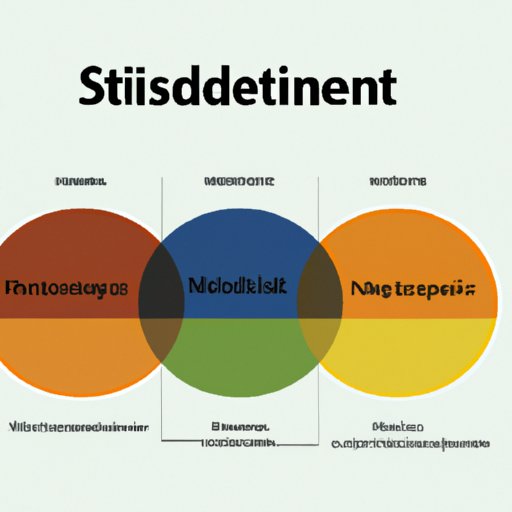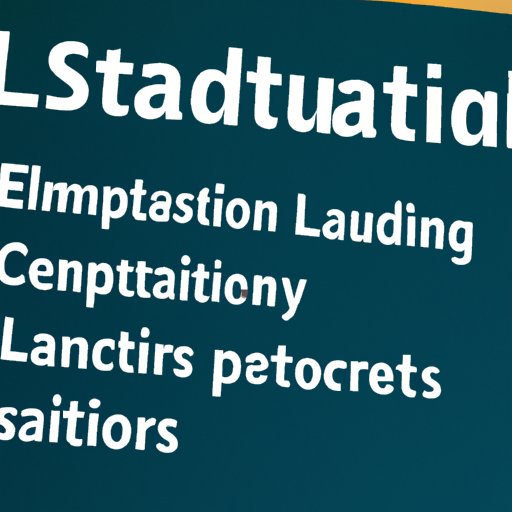An Overview of the Situational Leadership Theory
The Situational Leadership Theory is a management approach that focuses on the behavior of leaders in relation to their followers. This theory was developed by Dr. Paul Hersey and Kenneth Blanchard in the late 1960s, and has since become one of the most widely used leadership models in modern business. The theory suggests that the best way for a leader to effectively manage their team is to adjust their leadership style based on the situation at hand and the needs of their followers.
At its core, the Situational Leadership Theory is based on two key principles. The first principle is that there is no single “best” leadership style; instead, the most effective leaders are those who can adapt their style to the needs of their followers. The second principle is that the leader-follower relationship should be seen as a partnership, with both parties working together to achieve a common goal.
Throughout the years, the Situational Leadership Theory has evolved and adapted to meet the changing needs of organizations. Today, the model is used by many businesses to develop effective leadership strategies that can help teams reach their goals.

Exploring the Four Styles of Situational Leadership
The Situational Leadership Theory is based on four distinct leadership styles: directive, supportive, participative, and delegative. Each of these styles has its own set of characteristics and benefits, and it is important for leaders to understand how to use each of them effectively.
Directive Style: The directive style is characterized by a leader who provides clear instructions and expectations to their team. This style is best used when the team needs direction and guidance in order to complete a task or project.
Supportive Style: The supportive style is focused on providing emotional support and encouragement to the team. This style is best used when the team needs motivation and a sense of belonging in order to succeed.
Participative Style: The participative style is focused on involving the team in decision-making. This style is best used when the team needs to be empowered in order to feel ownership of the project.
Delegative Style: The delegative style is focused on giving the team autonomy and responsibility. This style is best used when the team is capable and self-motivated and needs minimal direction from the leader.
Examining the Benefits of Situational Leadership
The Situational Leadership Theory has several key benefits that can help organizations achieve their goals. By using this model, leaders can foster an environment of trust, collaboration, and engagement that can lead to improved performance and better results.
Increased Employee Engagement: One of the biggest benefits of the Situational Leadership Theory is that it encourages leaders to engage with their team members. By understanding the needs of their followers, leaders can provide the support and direction they need in order to be successful.
Improved Communication: The Situational Leadership Theory also helps to improve communication between leaders and their team. By establishing clear expectations and objectives, leaders can ensure that everyone is on the same page and working towards the same goal.
Flexibility in Decision-Making: The Situational Leadership Theory also encourages flexibility in decision-making. By considering the needs of their followers, leaders can make decisions that are best suited for the situation at hand.

Understanding the Challenges of Situational Leadership
While the Situational Leadership Theory has many advantages, there are some potential challenges that leaders should be aware of. It is important to recognize these challenges and put measures in place to address them in order to ensure the success of the model.
Potential for Miscommunication: One of the potential challenges of the Situational Leadership Theory is the potential for miscommunication. If leaders are not clear in their communication, it can lead to confusion and frustration among their team members.
Ineffective Implementation: Another potential challenge is ineffective implementation. If leaders are not properly trained in the model, it can lead to ineffective implementation, which can reduce the effectiveness of the model.
Inconsistent Leadership Styles: Finally, the Situational Leadership Theory can be difficult to maintain if leaders are not consistent in their leadership styles. It is important for leaders to remain flexible and adjust their style based on the needs of their followers.
How to Implement the Situational Leadership Theory
In order to effectively implement the Situational Leadership Theory, there are several steps that leaders should take. By following these steps, leaders can ensure that their team is able to maximize the benefits of the model.
Establishing Clear Objectives: The first step in implementing the model is to establish clear objectives for the team. By setting clear goals and expectations, leaders can ensure that everyone is on the same page and working towards the same outcome.
Developing a Communication Plan: The next step is to develop a communication plan. By establishing open channels of communication, leaders can ensure that their team members are able to share their ideas and concerns in a constructive manner.
Assessing Leadership Skills: Finally, it is important for leaders to assess their own leadership skills. By understanding their strengths and weaknesses, leaders can identify areas where they need to improve in order to effectively lead their team.

Examples of Successful Situational Leadership
The Situational Leadership Theory has been successfully implemented in many different industries. Here are a few examples of companies that have used the model to great effect:
Google: Google has successfully implemented the Situational Leadership Theory in order to create an innovative and collaborative culture. By encouraging employees to take initiative and think outside the box, Google has been able to foster an environment of creativity and innovation.
Apple: Apple has successfully used the Situational Leadership Theory to create a highly productive and efficient work environment. By providing clear direction and empowering employees to make decisions, Apple has been able to foster an environment of accountability and excellence.
Microsoft: Microsoft has successfully implemented the Situational Leadership Theory to create a culture of collaboration and trust. By providing support and recognizing the contributions of their employees, Microsoft has been able to foster an environment of innovation and growth.

The Future of Situational Leadership Theory
The Situational Leadership Theory is an increasingly popular model in today’s business world, and its importance is likely to continue to grow in the future. As organizations look for ways to increase efficiency and productivity, the model is likely to be adopted in more and more industries.
In addition, research and development into the model is likely to continue. As researchers gain a better understanding of the model, they may be able to identify new ways to improve its effectiveness and maximize its benefits.
Finally, the Situational Leadership Theory is likely to be adopted in different industries. As organizations look for ways to improve their leadership strategies, the model is likely to become more popular in fields such as healthcare, education, and government.
Conclusion
The Situational Leadership Theory is a powerful model that can help organizations achieve their goals. By understanding the key principles of the model and how to effectively implement it, leaders can foster an environment of trust, collaboration, and engagement that can lead to improved performance and better results.
(Note: Is this article not meeting your expectations? Do you have knowledge or insights to share? Unlock new opportunities and expand your reach by joining our authors team. Click Registration to join us and share your expertise with our readers.)
